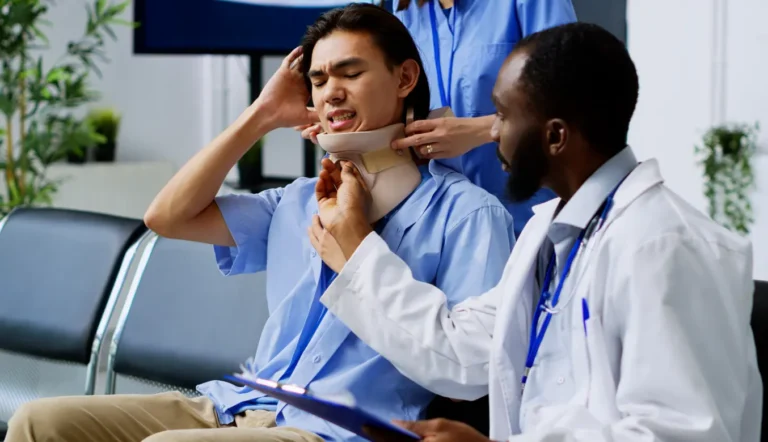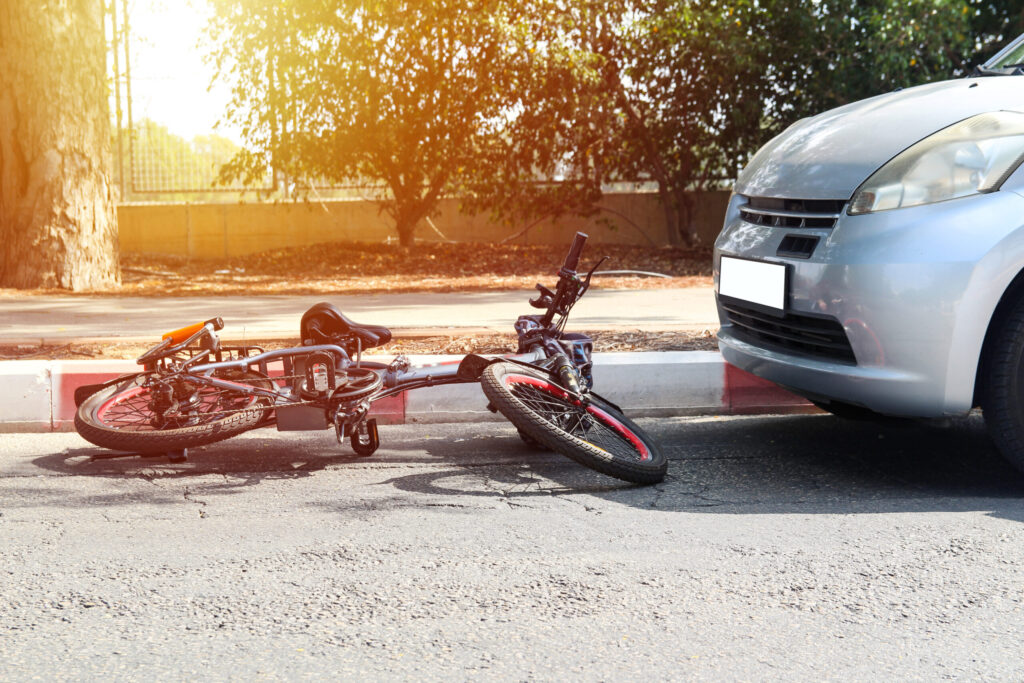Table of Contents
Advancements in road safety technologies are more crucial than ever before. With an increase in traffic and the growing number of vulnerable road users, such as pedestrians, cyclists, and motorcyclists, ensuring their safety has become a paramount concern. If you’re someone who has been affected by an auto accident or is seeking legal advice, understanding these technological advancements can provide both reassurance and knowledge on how the future might offer better protection.
What Is a Vulnerable Road User?
A vulnerable road user is someone who uses the road who lacks the protection that a car or truck affords and is therefore more vulnerable to injury or death should an accident occur. This category typically includes pedestrians, cyclists, motorcyclists, and users of other non-motorized or light motorized forms of transportation, such as scooters or skateboards. The term underscores the need for special consideration in road safety measures, infrastructure design, and traffic laws to protect these at-risk individuals.
Why Vulnerable Road Users Need Extra Protection From Vehicle Accidents
Vulnerable road users (VRUs) are at a higher risk of injury or death in traffic accidents due to their exposed nature and lack of protection compared to vehicle occupants. Pedestrians, cyclists, and motorcyclists are particularly susceptible to severe injuries in collisions. Statistics show that VRUs account for over 50% of all road traffic deaths globally, highlighting the urgent need for improved safety measures. By focusing on safeguarding these individuals, we can significantly reduce the number of fatalities and serious injuries on our roads.
Smart Pedestrian Crossings
Smart pedestrian crossings are an innovative solution designed to enhance the safety of pedestrians at intersections and crosswalks. These crossings use sensors and cameras to detect the presence of pedestrians and adjust traffic signals accordingly. When a pedestrian is detected, the traffic lights will change to give them priority, allowing them to cross safely. Additionally, smart crossings can provide visual and auditory cues to alert both pedestrians and drivers, reducing the risk of accidents.
Benefits of Smart Pedestrian Crossings
One of the main benefits of smart pedestrian crossings is their ability to reduce the likelihood of collisions between pedestrians and vehicles. By giving pedestrians priority and providing clear signals to both parties, these crossings can help prevent accidents and save lives. Furthermore, smart crossings can improve traffic flow by minimizing unnecessary delays, making them a practical solution for busy urban areas.
Real-World Examples
Several cities around the world have implemented smart pedestrian crossings with positive results. For instance, London introduced “Smart Crossings” that use LED lights embedded in the road surface to create illuminated pathways for pedestrians. These crossings have been shown to increase driver awareness and reduce the likelihood of accidents.
Future Potential
As technology continues to advance, we can expect even more sophisticated smart pedestrian crossings in the future. Innovations such as AI-powered predictive analytics and real-time data sharing between vehicles and infrastructure could further enhance the safety and efficiency of these crossings.
Intelligent Speed Assistance (ISA)
Intelligent Speed Assistance (ISA) is a technology designed to help drivers maintain safe speeds by providing real-time feedback and automatic speed adjustments. ISA systems use GPS, cameras, and sensors to monitor the vehicle’s speed and compare it to the posted speed limit. If the vehicle exceeds the speed limit, the system can alert the driver or automatically reduce the speed to ensure compliance.
How Intelligent Speed Assistance Works
ISA systems can operate in various modes: advisory, supportive, and intervening. In advisory mode, the system provides visual or auditory warnings to the driver when they exceed the speed limit. In supportive mode, the system gently reduces the throttle to help the driver maintain a safe speed. In intervening mode, the system can take full control of the vehicle’s speed, preventing the driver from exceeding the limit altogether.
Benefits for Vulnerable Road Users
By helping drivers maintain safe speeds, ISA systems can significantly reduce the risk of accidents involving vulnerable road users. Lower speeds result in shorter stopping distances and reduced impact forces in the event of a collision, increasing the chances of survival for pedestrians, cyclists, and motorcyclists.
Adoption and Implementation of ISA
Many countries recognize the potential of ISA systems and are taking steps to encourage their adoption. The European Union, for example, mandated that all new vehicles sold in the region be equipped with ISA technology by 2022. This move is expected to save thousands of lives and prevent countless injuries each year.
Advanced Driver Assistance Systems (ADAS)
Advanced Driver Assistance Systems (ADAS) encompass a wide range of technologies designed to improve vehicle safety and assist drivers in various driving tasks. Some of the key ADAS features that benefit vulnerable road users include automatic emergency braking (AEB), lane departure warning (LDW), and blind-spot detection.
Automatic Emergency Braking (AEB)
AEB systems use sensors and cameras to monitor the road ahead and detect potential collisions. If the system determines that a collision is imminent, it can automatically apply the brakes to avoid or mitigate the impact. AEB systems are particularly beneficial for preventing accidents involving pedestrians and cyclists who may unexpectedly enter the vehicle’s path.
Lane Departure Warning (LDW)
LDW systems alert drivers when their vehicle begins to drift out of its lane without signaling. This technology helps prevent accidents caused by driver inattention or drowsiness, which can be particularly dangerous for vulnerable road users sharing the road with larger vehicles.
Blind-Spot Detection
Blind-spot detection systems use sensors to monitor areas around the vehicle that are not visible to the driver. When a vulnerable road user, such as a cyclist or motorcyclist, enters the blind spot, the system warns the driver, reducing the risk of collisions during lane changes.

If you were injured in an accident due to someone else’s negligence, Farah & Farah is here for you. We’ve relentlessly fought for the right to compensation for our clients and their families since 1979.
Enhanced Street Lighting
Proper street lighting plays a crucial role in ensuring the safety of vulnerable road users, particularly at night and in low-light conditions. Enhanced street lighting technologies, such as smart LEDs and adaptive lighting systems, can significantly improve visibility and reduce the risk of accidents.
Smart LED Lighting
Smart LED streetlights are energy-efficient and can be programmed to adjust their brightness based on the time of day and traffic conditions. These lights provide better illumination compared to traditional streetlights, making it easier for drivers to see pedestrians and cyclists.
Adaptive Lighting Systems
Adaptive lighting systems use sensors to detect the presence of road users and adjust the lighting accordingly. For example, when a pedestrian or cyclist is detected, the system can increase the brightness of the streetlights in the area, ensuring they are clearly visible to drivers.
Impact on Road Safety and Accident Reduction
Studies have shown that improved street lighting can reduce the number of accidents involving vulnerable road users by up to 50%. By investing in enhanced lighting technologies, cities can create safer environments for everyone on the road.
Vehicle-To-Everything (V2X) Communication
Vehicle-to-everything (V2X) communication is a cutting-edge technology that enables vehicles to communicate with each other and with road infrastructure. This technology has the potential to revolutionize road safety by providing real-time information to drivers and automated systems.
How V2X Works
V2X communication relies on dedicated short-range communication (DSRC) or cellular networks to transmit data between vehicles, traffic signals, and other road users. This data can include information about traffic conditions, road hazards, and the presence of vulnerable road users.
Benefits for Vulnerable Road Users
V2X communication can help prevent collisions by providing real-time information about the location and movement of vulnerable road users. For example, if a pedestrian is about to cross the street, V2X technology can alert nearby vehicles to slow down and take appropriate action.
Future Developments
The integration of V2X communication with autonomous vehicles and smart infrastructure has the potential to create a fully connected transportation ecosystem. This level of connectivity could lead to unprecedented improvements in road safety and efficiency.
Personalized Safety Apps
Mobile apps designed to enhance the safety of vulnerable road users are becoming increasingly popular. These apps use a combination of GPS, real-time data, and user inputs to provide personalized safety recommendations and alerts.
Features of Safety Apps
Safety apps can offer a range of features, including route planning, hazard alerts, and emergency assistance. For example, a cyclist using a safety app can receive notifications about dangerous intersections, road closures, and areas with heavy traffic.
User Benefits
Safety apps provide real-time information and personalized recommendations, enabling vulnerable road users to make informed decisions and avoid potential hazards. This can lead to a safer and more enjoyable experience for pedestrians, cyclists, and motorcyclists.
E-Scooter Safety Enhancements
The popularity of electric scooters (e-scooters) has surged in recent years. They offer a convenient and eco-friendly transportation option for urban commuters. However, the rise of e-scooters has also raised concerns about safety for both riders and other road users.
E-Scooter Safety Technologies
To address these concerns, various safety technologies are being integrated into e-scooters. Some of these include geofencing and automatic braking systems. Geofencing restricts e-scooter speeds in certain areas, such as pedestrian zones, to reduce the risk of accidents. Automatic braking systems detect obstacles and apply the brakes automatically to prevent collisions.
Safety Regulations for E-Scooters
Many cities are implementing safety regulations for e-scooter use, such as mandatory helmet laws, designated parking zones, and restricted riding areas. These measures aim to create a safer environment for all road users.
Raising Awareness
Educating e-scooter riders about safe riding practices is essential for reducing accidents. Companies and local authorities are working together to provide training and resources to promote responsible e-scooter use.
Seeking Legal Help as a Vulnerable Road User
If you are a vulnerable road user who has been injured on the roadway, it is crucial to seek legal help from a reputable firm like Farah & Farah. Our team of experienced attorneys specializes in personal injury cases related to accidents involving pedestrians, cyclists, and motorcyclists. We understand the unique challenges facing vulnerable road users and the importance of seeking justice for their injuries. Our compassionate and knowledgeable team will provide personalized support throughout the legal process.
If you or a loved one has been in a traffic accident as a vulnerable road user, don’t hesitate to contact Farah & Farah for a free consultation. Together, we can work towards a safer and more secure future for all road users.










